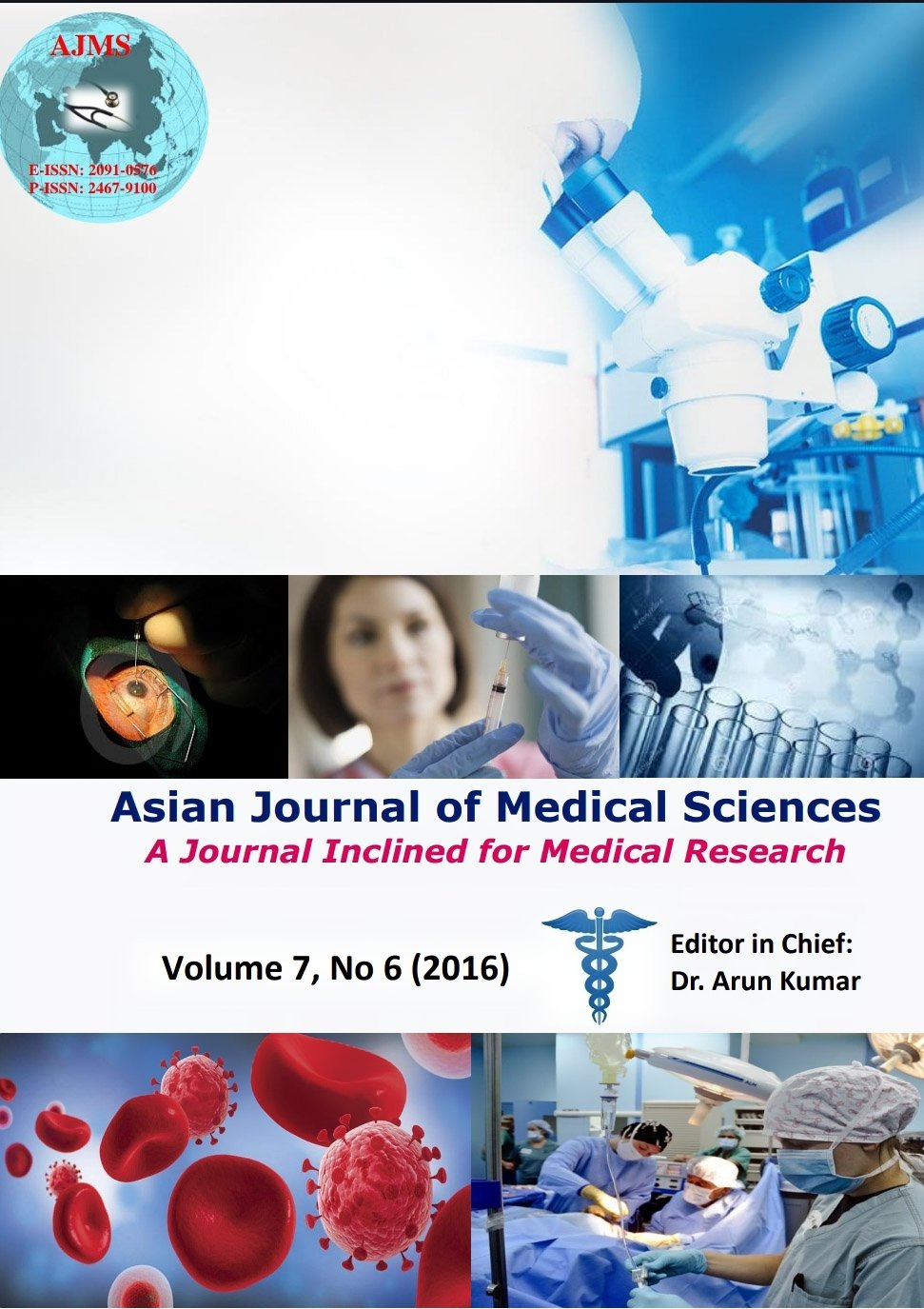Diagnosis of diabetes mellitus on the basis of HbA1c: Is this true in hypothyroidism also?
Keywords:
Hypothyroidism, anemia, glycosylated hemoglobinAbstract
Background: Hypothyroidism may leads to hypoproliferative anemia. It is possible that this reduced erythropoiesis may result false elevation of HbA1c in some cases and further leading to an erroneous diagnosis of pre diabetes or diabetes.
Aims and Objective: This study was planned to assess changes in HbA1c after initiation of thyroxine replacement in patients with subclinical and overt hypothyroidism.
Settings and Design: This prospective study was conducted at Department of General Medicine of a tertiary care centre over one year.
Methods and Material: 100 subjects were recruited for the study. Fasting blood glucose, serum creatinine, hemoglobin, HbA1c, reticulocyte count, serum free T4 and TSH estimation done in all subjects. Hypothyroid patients were started on thyroxine. After three months of documentation of euthyroidism, same investigations were repeated.
Statistical analysis used: Statistical software, SPSS version 17.0 was used for analysis.
Results: After correction of hypothyroidism, TSH decreased from 92.3(±30.9) to 3.4±2.9 µIU/L and 12.2(±4.5) to 4.4±2.9 µIU/ml in overt hypothyroidism and subclinical hypothyroidism respectively. There was a statistically significant fall in the HbA1c (SD) from 5.9% (0.8) to 5.6% (0.6) and 6.0% (0.3) to 5.7% (0.3) following the correction of hypothyroidism in overt hypothyroidism and subclinical hypothyroidism respectively. However, there were no statistically significant changes in the fasting as well as postprandial blood glucose.
Conclusions: Our study demonstrated that HbA1c values are falsely increased in patients with hypothyroidism. This falsely raised HbA1c became normal after thyroxine supplement.
Asian Journal of Medical Sciences Vol.7(6) 2016 36-39
Downloads
Downloads
Published
How to Cite
Issue
Section
License
Authors who publish with this journal agree to the following terms:
- The journal holds copyright and publishes the work under a Creative Commons CC-BY-NC license that permits use, distribution and reprduction in any medium, provided the original work is properly cited and is not used for commercial purposes. The journal should be recognised as the original publisher of this work.
- Authors are able to enter into separate, additional contractual arrangements for the non-exclusive distribution of the journal's published version of the work (e.g., post it to an institutional repository or publish it in a book), with an acknowledgement of its initial publication in this journal.
- Authors are permitted and encouraged to post their work online (e.g., in institutional repositories or on their website) prior to and during the submission process, as it can lead to productive exchanges, as well as earlier and greater citation of published work (See The Effect of Open Access).




